14 Important Things About Clover Lawns
- May 31, 2024
- 0 comment
Are you considering a makeover for your yard with a clover lawn? Dive into our detailed guide that covers 14 important things you need to know about clover lawns. We’ll give you a straightforward rundown of all the benefits and things to think about, helping you decide if a clover lawn is right for your green space. Get ready to discover how this eco-friendly option can transform your yard!
1. Eco-Friendly Clover Lawn Benefits
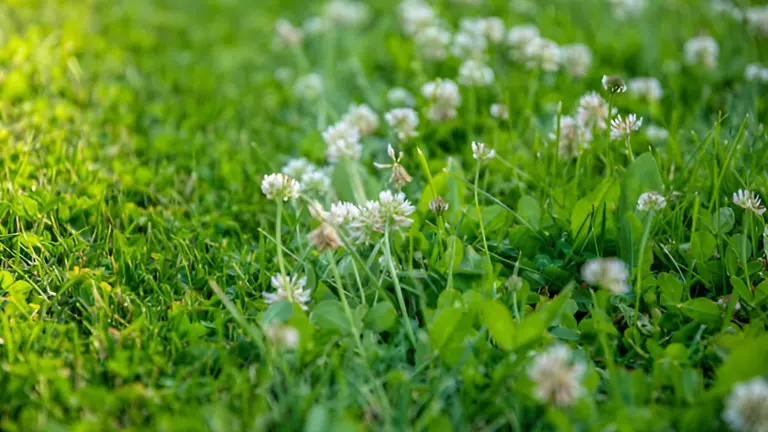
Clover lawns are a sustainable choice, requiring far less water, fertilizer, and mowing than traditional grass. This reduction in resource use lowers your ecological footprint and supports a healthier planet. By choosing clover, you contribute to environmental conservation, promoting a greener and more sustainable landscape.
2. Attracting Pollinators with Clover

Clover lawns are vital for attracting bees and butterflies, serving as rich nectar sources. This promotes local biodiversity by supporting various pollinator species, which are crucial for the pollination of many plants. As a result, the health and vitality of your local ecosystem are enhanced, making your garden a bustling hub of natural activity.
3. Clover for Better Soil Health
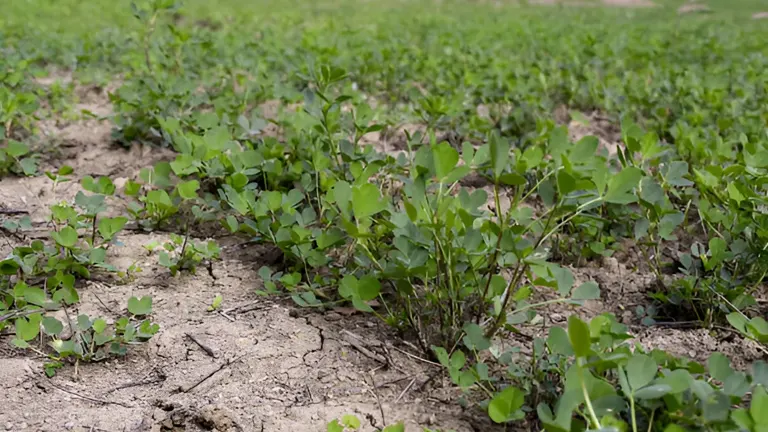
Clover’s deep roots stabilize the soil, preventing erosion effectively. These roots penetrate deeply, binding the soil tightly which improves its overall structure by increasing aeration and porosity. This makes clover an excellent choice for gardens with problematic soils, such as sandy areas or those prone to erosion, enhancing soil health and facilitating better growth conditions for surrounding plants.
4. Drought-Resistant Clover Lawns
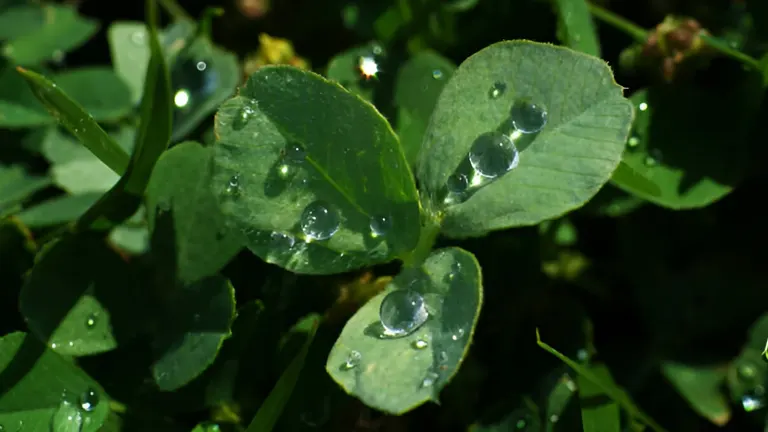
Clover lawns excel in water conservation, maintaining their lush, green appearance even through dry spells. This resilience means less frequent watering is required compared to traditional grass, which not only saves water but also reduces the time and effort you spend on lawn maintenance.
5. Clover: A Natural Soil Enricher
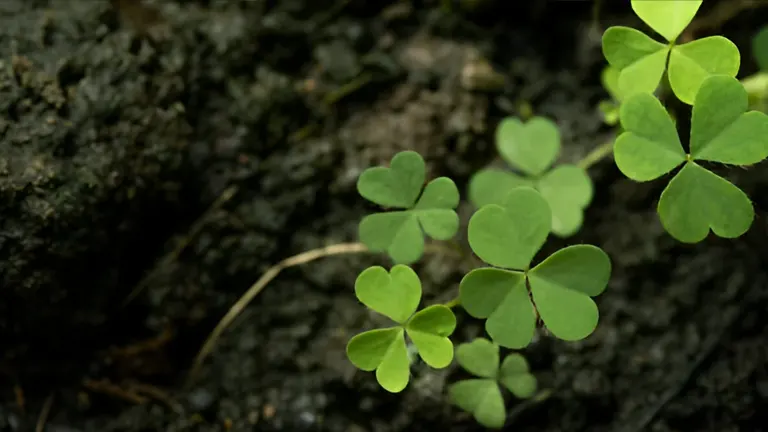
Clover forms a symbiotic relationship with bacteria in its roots, which allows it to convert atmospheric nitrogen into a form that plants can readily absorb. This natural process enriches the soil, enhancing its fertility without the need for additional chemical fertilizers. By integrating clover into your lawn, you’re not only promoting healthier soil but also reducing reliance on synthetic inputs, contributing to a more sustainable garden ecosystem.
6. Pest-Resistant Clover Lawns
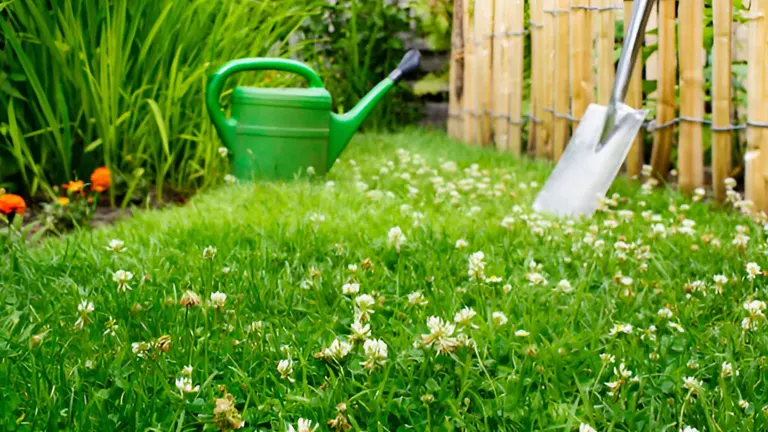
Clover lawns naturally resist pests and diseases thanks to their dense growth and inherent chemical properties. These characteristics make clover an effective barrier against common lawn pests and pathogens, reducing the need for chemical treatments. This built-in resistance helps maintain a healthier lawn with less intervention, contributing to a more natural and sustainable garden environment.
7. Low-Maintenance Clover Care
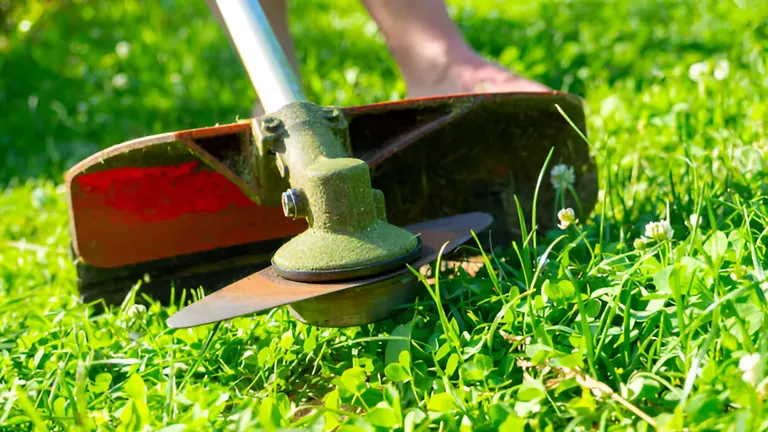
Clover lawns grow more slowly than traditional grass, necessitating less frequent mowing. This lower maintenance requirement saves you time and effort, allowing you to enjoy a beautiful yard with minimal upkeep.
8. Clover’s Foot Traffic Resilience

Clover’s ability to quickly rebound from wear makes it exceptionally resilient to foot traffic. Despite its slower growth rate, it remains durable and retains its appearance, making it ideal for areas frequently used for family activities and outdoor gatherings.
9. Clover’s Soil Flexibility
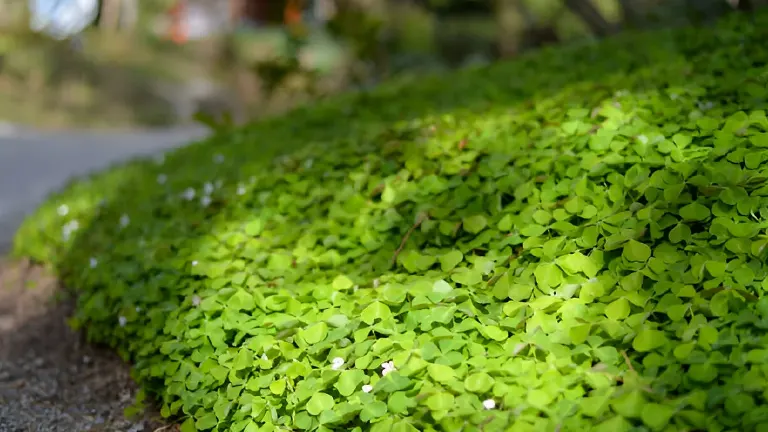
Clover is highly adaptable, flourishing in a range of soil conditions including poor, acidic, or compacted soils. Over time, it enhances soil fertility, improving the overall health and quality of the soil, making it a versatile choice for any garden setting.
10. Clover Lawn Planting Options

Clover provides versatile planting options to suit various landscaping needs. You can choose to sow seeds, which is an economical approach for covering large areas. Alternatively, using plugs allows for quicker establishment in smaller or specific sections of your yard, offering speed and precision in garden design.
11. Trimming Tips for Clover Lawns
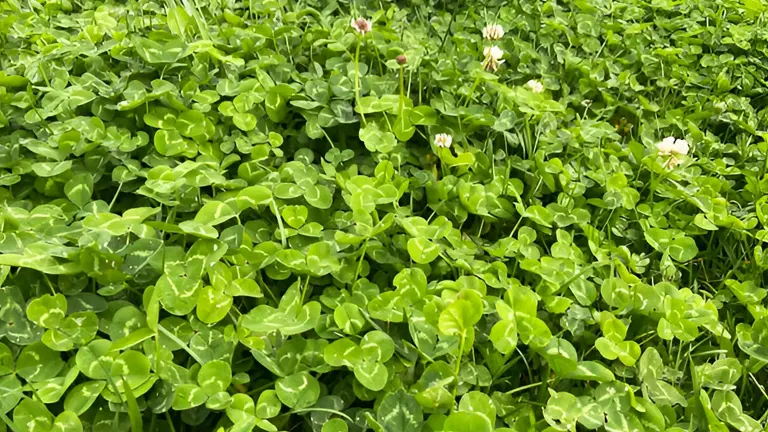
While generally low-maintenance, clover lawns do benefit from occasional trimming to stay neat and healthy. This light upkeep not only keeps the lawn looking tidy but also enhances its ability to fix nitrogen, improving soil quality over time.
12. Avoiding Stains with Clover
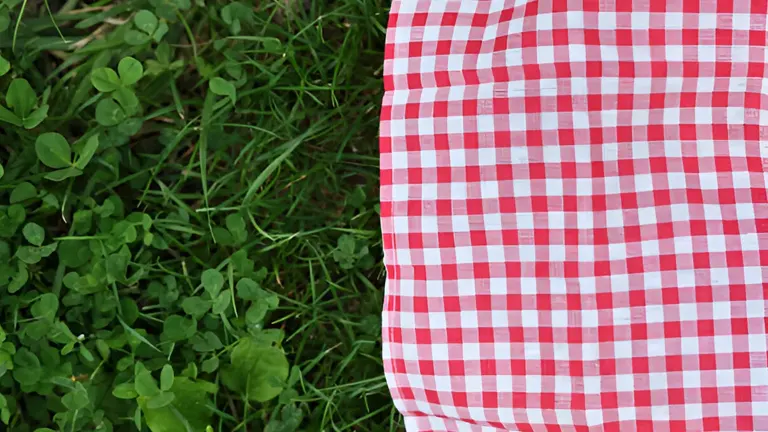
Although some clover varieties contain natural pigments that might stain clothing, these risks are generally low and can be effectively managed. Choosing varieties with less pigment or taking simple preventative measures can keep your clothes clean while still enjoying the benefits of a clover lawn.
13. Pet-Safe Clover Lawn Varieties
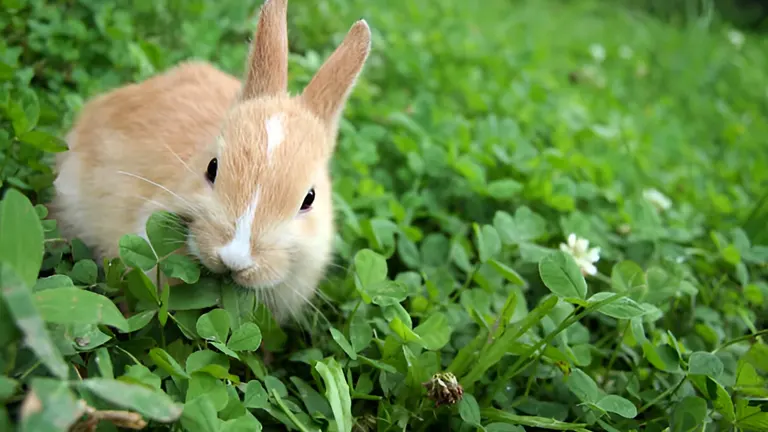
When incorporating clover into your lawn, it’s important to choose pet-friendly varieties, especially if your pets spend time grazing outdoors. Some types of clover can be harmful if consumed in large quantities. Selecting the right variety ensures your lawn is safe for all family members, including your four-legged ones.
14. Choosing the Right Clover for Your Yard
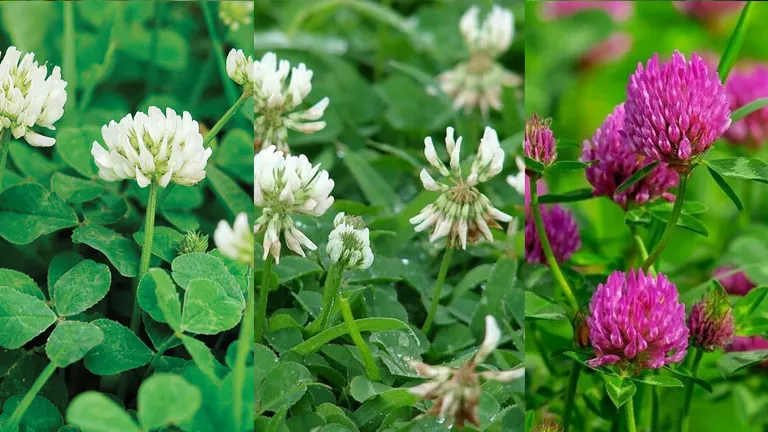
To ensure the success of your clover lawn, it’s vital to choose a variety that aligns with your local climate, sunlight exposure, and soil conditions. Popular options like white clover (Trifolium repens), Dutch clover (Trifolium hybridum), and red clover (Trifolium pratense) each thrive under specific environmental conditions. Matching the clover type to your garden’s unique characteristics can optimize growth and overall lawn health.
Practical Tips and How-To Guide for Planting and Maintaining a Clover Lawn
Step-by-Step Planting Guide
- Choosing the Right Time: The best time to plant clover is during the spring or early fall. This timing allows the clover to establish itself while the weather is mild, ensuring stronger growth.
- Soil Preparation
- Test the Soil: Start with a soil test to determine pH and nutrient levels. Clover thrives in soil with a pH between 6.0 and 7.0.
- Clear the Area: Remove any existing grass or weeds. This can be done mechanically or by using an organic herbicide.
- Improve Soil Quality: Depending on your soil test results, amend the soil with compost to improve fertility and drainage.
- Planting
- Choosing Seeds or Plugs: Decide whether to use seeds or plugs based on your area size and specific needs.
- Seeding: If using seeds, spread them evenly at a rate of about 2-4 ounces per 1000 square feet. A seed spreader can help achieve uniform coverage.
- Watering: After planting, water the area gently but thoroughly to ensure good seed contact with the soil without causing runoff.
- Initial Maintenance
- Keep Moist: Water the planted area regularly to keep the soil moist until the clover seeds germinate and establish. Usually, this means watering lightly once or twice a day.
- First Mowing: Mow for the first time when the clover reaches 3 to 4 inches high to encourage spreading.
Ongoing Care Tips
- Watering Practices: Once established, clover requires significantly less water than traditional lawns. Water only when there are signs of stress, such as wilting or discoloration, typically during prolonged dry spells.
- Mowing Schedule: Clover does not need frequent mowing. Maintain a mowing height of about 2 to 3 inches to help promote growth and prevent weeds.
- Fertilizing: Generally, clover does not require additional fertilizers due to its nitrogen-fixing capabilities. However, an annual application of compost can help maintain soil health.
- Seasonal Care:
- Spring: In early spring, rake the lawn to remove dead material and aerate compacted spots.
- Fall: Consider overseeding any thin areas to keep the lawn dense and prevent weed invasion.
- Weed Management: Although clover is competitive against weeds, occasional hand-pulling of invasive weeds may be necessary.
Maintenance and Troubleshooting Guide for Clover Lawns
Maintaining a clover lawn is generally straightforward, but like any garden feature, it may occasionally face some challenges. Here’s how to tackle the most common issues effectively:
1. Managing Overgrowth
- Regular Mowing: To prevent overgrowth, mow your clover lawn every 3-4 weeks during the growing season. This keeps the lawn at an ideal height and encourages denser growth.
- Trimming Edges: Use a string trimmer to maintain the edges of your clover lawn and prevent it from encroaching into garden beds or pathways.
2. Addressing Patchy Areas
- Re-seeding: If you notice patches where clover isn’t thriving, re-seed those areas. First, rake the patchy area lightly to remove any dead material and improve soil contact, then sprinkle clover seeds and water regularly until germination.
- Soil Health Check: Conduct a soil test to determine if there are underlying issues such as pH imbalance or nutrient deficiencies. Adjust the soil conditions based on the test results to promote better clover growth.
3. Dealing with Excessive Clover Bloom
- Increase Mowing Frequency: If you find that your clover lawn is blooming too vigorously, increase your mowing frequency temporarily. Mowing cuts back the flowers and redirects the plant’s energy into leaf growth.
- Selective Removal: For areas where clover bloom is particularly dense, manually remove some of the flowering heads to control the spread and encourage more balanced growth.
4. Preventing and Managing Weeds
- Regular Monitoring: Keep an eye on your lawn for any signs of weed invasions. Clover’s dense growth usually suppresses weeds, but some can still emerge.
- Hand Pulling: Remove weeds by hand as soon as you spot them. This prevents them from establishing and spreading throughout the lawn.
- Mulching: In garden beds adjacent to your clover lawn, use mulch to prevent clover and weeds from encroaching.
5. Controlling Pest Infestations
- Natural Remedies: If pests become a problem, try natural solutions first, such as introducing beneficial insects or applying neem oil.
- Proper Lawn Care: Often, pests exploit weak areas in a lawn. Ensuring your clover lawn is healthy, through proper watering and soil care, can naturally reduce pest outbreaks.
6. Addressing Yellowing or Browning
- Adequate Watering: While clover is drought-tolerant, prolonged dry spells can cause stress. Water your lawn during extended periods of dry weather to maintain its vibrant color.
- Nutrient Management: If yellowing persists, consider an application of compost or a balanced organic fertilizer to boost nutrient levels.
Conclusion
With this detailed exploration of the 14 key benefits of clover lawns, you are now well-prepared to decide if this eco-friendly and low-maintenance option aligns with your landscaping goals. Clover not only supports a sustainable environment but also enhances the beauty and functionality of your outdoor space. Are you ready to embark on a journey towards creating a more sustainable, vibrant, and thriving lawn? Let’s make your green space not just a sight to behold, but a boon for the environment.
FAQs
- Is a clover lawn safe for pets?
Yes, clover is generally safe for pets. However, it’s important to choose pet-friendly varieties, especially if your pets spend a lot of time on the lawn. Some types of clover, like white clover, are known to be safe for pets. Always ensure that your pets don’t consume large quantities, as excessive ingestion can cause mild gastrointestinal upset. - How do I manage staining from clover?
Some clover varieties may cause staining on clothes and shoes due to their natural pigments. To manage this, you can select less pigmented clover varieties or implement practical measures like removing shoes before entering the house and training pets to stay off the lawn immediately after heavy use. - How do I choose the right clover variety for my climate?
Clover varieties vary in their climate preferences:- White Clover (Trifolium repens): Best for cooler, moist climates and widely adaptable.
- Red Clover (Trifolium pratense): Suitable for cooler climates and a bit taller, often used in pasture mixes.
- Dutch Clover (Trifolium hybridum): Handles partial shade better and is suitable for temperate climates.
- It’s important to consider your local conditions, such as temperature extremes and humidity when selecting a variety. Consulting with a local gardening center or a landscaping professional can provide insights specific to your area.
- Does clover need a lot of water?
Clover requires less water compared to traditional grass lawns. Once established, clover is quite drought-resistant, only needing supplemental watering during extended periods of dry weather. - Will clover outcompete other plants in my garden?
Clover is a vigorous grower but generally coexists well with other lawn grasses and plants. In garden beds, it’s best to keep clover contained or choose low-spreading varieties to prevent it from overwhelming other plants. - Can I use clover on a lawn that has pets and children?
Absolutely! Clover is resilient and recovers quickly from foot traffic, making it ideal for lawns used by pets and children. Its soft texture and the fact that it stays cooler than grass in sunlight also contribute to a pleasant playing surface. - How often should I mow a clover lawn?
Clover lawns require less frequent mowing than traditional grass lawns. Typically, mowing every 3-4 weeks is sufficient to keep it tidy and promote healthy growth, depending on your aesthetic preference and the specific variety. - Does clover attract bees, and is this a problem?
Clover does attract bees because of its flowers, which is great for promoting local pollinator populations. However, if bee activity is a concern—particularly in areas frequented by children or those allergic to bee stings—you might consider mowing more frequently to reduce flowering or select low-flower clover varieties.
We hope this guide has shed some light on the vibrant world of clover lawns! If you have any experiences, tips, or questions about transitioning to or maintaining a clover lawn, we’d love to hear from you. Drop a comment below and share your thoughts. Let’s keep the conversation going and help each other create greener, more sustainable spaces!

David Murray
Forestry AuthorI'm David Murry, a forestry equipment specialist with a focus on chainsaw operation. With over 13 years of experience, I've honed my skills in operating and maintaining a wide range of machinery, from chainsaws to log splitters. My passion for the outdoors and commitment to sustainable forestry drive my work, which emphasizes safety, efficiency, and staying updated with industry advancements. Additionally, I'm dedicated to sharing my expertise and promoting environmental awareness within the forestry community.





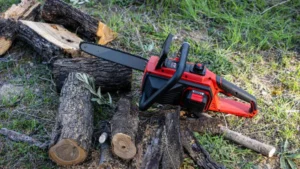
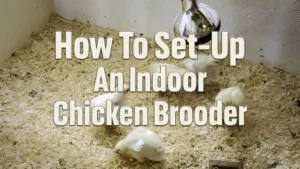





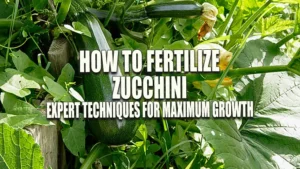
Leave your comment